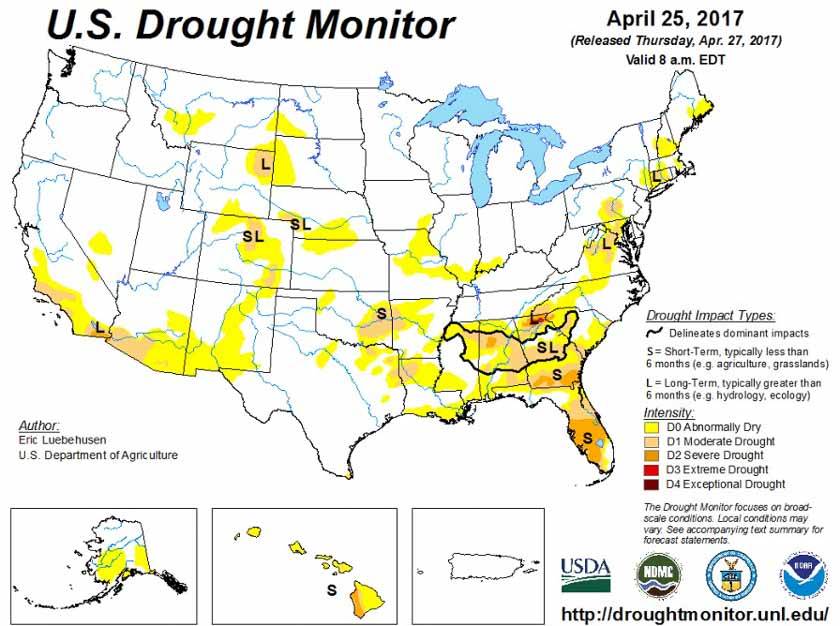On May 1 the Predictive Services section at the National Interagency Fire Center issued their Wildland Fire Potential Outlook for May through August. The data represents the cumulative forecasts of the ten Geographic Area Predictive Services Units and the National Predictive Services Unit.
Below are the highlights of their report, NIFC’s graphical outlooks for May through August, the Drought Monitor, and NOAA’s temperature and precipitation forecasts.
Florida and southeastern Georgia continue to experience significant fire activity as warmer and drier than normal conditions persist. Worsening drought conditions in these areas continue to lead to increased fire activity and behavior. Recent precipitation events have not been significant or frequent enough to provide relief. The existing conditions and activity are expected to peak by early June before beginning to show improvement and subside as tropical patterns develop bringing beneficial precipitation.
Wildfire activity across the Southern Plains has begun to wane as the seasonal shift westward begins. Greenup has begun to take hold and precipitation events have become more common across the Central and Northern Plains.
Arizona and western New Mexico will see an increase in fire activity in May and June as the region enters the heart of its fire season. Heavy growth of fine fuels across southern Arizona and southwestern New Mexico have led to above normal fire potential along the Mexican border that should persist through June before the monsoonal rains arrive in early July and decrease activity.
As the fire season progresses into July, there are concerns with the seasonal shift west and north into California, and Great Basin. Exceptional winter and early spring precipitation is leading to the development of a substantial crop of fine fuels in the lower and middle elevations. The heavy loading of fine fuels could become problematic when they cure out in July. In the higher elevations, the mountain snowpack continues to melt at a normal to slower than normal rate. This should produce a delay in the onset of significant fire activity in the high elevations.
In Alaska, the south central portion of the state continues to be abnormally dry. While overall normal fire potential is forecast, bursts of more significant fire activity are possible across the interior portion of the state.
By mid-late July, the western fire season will begin to progress north into the Pacific Northwest and Northern Rockies. While a normal transition into fire season is expected in the lower elevations, a delayed entrance is possible in the higher elevations as both regions enter their fire seasons having seen abundant winter and spring precipitation and snowpack accumulation.





